In Bucharest the gallery scene and the city itself are a perfect match. Everything here piles up, forms surprising blends and remains in a permanent state o slight chaos: from the Calea Victoriei, styled after Haussmann’s designs of Paris, to the cracking concrete desert surrounding Ceaușescu’s palace. Such stylistic swings are down both to earthquakes many of which have hit the city over the years, and to a certain bravado of those who have built this city. This last trait was by no means an exclusive attribute of the dictator who ruled Romania for over two decades. For example, already in the 2000’s next to the 19th century St. Joseph’s cathedral an impressive office building named Cathedral Plaza was erected. The fact that in terms of design it stands poles apart from its surroundings is the least of the worries here. The construction of the tall building turned out to harm the structure of the church. Now, despite a valid demolition warrant, that thing still stands: empty and unfinished, representing a weird symbiosis between the new and the old within a city where nothing is impossible. The same is true of Bucharest’s gallery-related panorama, fragmentary, somewhat provincial, but with many ideas for what it wants to be.
A centre in the peripheries
The first real private gallery to be founded in Bucharest was, in 2002, the H’art. Today, in spite of not being among the top highlights, not only does it still exist, but it even got extended: the original gallery was joined by a new and separate venue, the H’art Appendix. As is expected of a gallery which defines the local scene, H’art is generation-profiled: most of the artists whose work has been on display here represent the generation which entered adulthood already after the regime change. The owner, Dan Popescu, used his new brand to gather the most interesting artists of the young Romanian scene of the time. And yet, ironically enough, the gallery’s biggest star is not some young shaver, but a self-taught artist born in 1946 with the looks and style of a veteran cowboy who’s had his share of rough patches in life. But there is good reason for that: the story of Ion Bârlădeanu is arguably the most spectacular incarnation of the from-shoeshine-boy-to-millionaire tops in all of Romanian art. Before he was discovered by the talent-hunting gallery owner, Bârlădeanu was just a homeless man who, for sheer fun, made meticulous collages from pieces of illustrated magazines he found in the streets. Once H’art adopted him he almost instantly became a celebrity. He got dentures where his teeth were missing, and he was bought a flat. The latter, by the way, took him quite long to get used to, since tranquil bourgeois life was something alien to him. He became the main star of the gallery not just because of the PR value of his biography. It is Bârlădeanu’s art which reflects to the fullest Romania’s recent history: the whole regime-change-caused mess: Ceaușescu’s images and statues of Lenin, idyllic pictures of the countryside, banknotes thrown in the air, temples dripping with gold, slices of ads from the West and cuttings from porn magazines…
From a Polish perspective, the profile of H’art and the career of Bârlădeanu are an interesting case. Romanian art market is kind of a late bloomer, more than the Polish one, with two major galleries established in late 90s, that managed to shape the scene then and are still the two major players today. Raster, who started as a magazine ran by Łukasz Gorczyca and Michał Kaczyński used a distinctly generational strategy. Starting with texts in which they didn’t hesitate to mock what was for them boring and shallow in mid-90s artworld, Raster creators made a way for a gallery that promoted the whole new generation of artists focused on contemporaneity, its pop-cultural and political face. Foksal Gallery Foundation was established by three young curators working previously in Foksal Gallery, the major non-commercial gallery in the communist Poland, that started in the 60s. Although they also focused mainly on the young generation, their approach was a bit different – instead of building Polish art market from the scratch, FGF focused on the international connections. On a scene like this, one part was „overlooked”, and for many years not many people noticed that. This part was the system transition and partly also neo avant-garde, which struggled to find a representation under a new regime. On the Romanian side things looked quite different though – starting a bit later, it avoided drawing such clear lines between periods and generations.
H’art is one of the galleries safely anchored in the elegant city centre. The character of the local scene, however, is best illustrated not by the centre, where as in most cities most major players are eventually established, but by the post-industrial Combinatul Fondului Plastic located in the far north of the city which cannot be accessed by subway. Just off one of the boulevards there are wild meadows, and somewhere beyond a vast stretch of bushes we can just see the spire of the Casa Presei Libere (House of the free press), a smaller cousin of the Moscow “seven sisters” and the Palace of Science and Culture in Warsaw. The compound of Combinatul is not, despite its somewhat misleading situation, just a venue of “super off”, alternative exhibitions. On the contrary: its stately main hall houses the current headquarters of the Nicodim which, next to Cluj’s Plan B, is simply the country’s best known and richest commercial gallery. It is worth stressing, however, that Nicodim’s road to success went the other way round: it earned its reputation while still operating overseas, in Los Angeles, and only cemented it by opening its branch in Bucharest.
It is the background provided by Nicodim, one of Romania’s highlights when it comes to the mid-generation and the young scene, from Ciprian Muresan to Razvan Boar, against which we start to notice the exoticism of Combinatul Fondului Plastic as a whole. It is a miniature of sort of the entire local scene. Here, in adjacent spaces, we find internationally renowned galleries and experimental artist-run initiatives, somewhere on the way stumbling over some rotting academic old wood. In this case, literally, since one of the resident artists creates gargantuan wooden sculptures aesthetically situated somewhere between academic monstrosity and folk art. All this is because inside Combinatul various artists rent studios. They do not, however, necessarily form any consolidated circle, which is logical enough, since they come from completely different places and backgrounds. There are those of the post-transformation kind, wide-read in modern art and often also educated abroad, and those representing the alternative reality of academy and associations. Still, it is only fair to point out that in Romania that “alternative reality” is not radically alternative and sometimes displays a surprising capability of interacting with the rest of the art world.
Romania’s Artists Union, the institutional equivalent of the Polish ZPAP, still enjoys a far stronger position than its counterpart. ZPAP is barely visible in Poland’s artistic life anywhere outside those BWA (Bureau of Artistic Exhibitions) which have had a less fortunate life after 1989. Now members of the union form an alternative circle that is pretty much totally unknown to the rest of the scene, and develop conspiracy theories about „mafia” that supposedly runs the artworld and excludes artists representing „traditional art values” from it. In Romania, meanwhile, one keeps coming across the association at the very heart of the land’s art world. Uniunea Artiștilor Plastici din România has at its disposal numerous venues all across the city, including the entire Combinatul complex. And even though it mostly consists of third-grade artists, it remains quite open thanks to its lack of concentration. Even „ARTA”, Romania’s most important art magazine, is published for the association’s money. The situation looks grimmer when it comes to teaching art, and not just at university level. Inside Combinatul there is an art high school. One would assume that to be a neighbour of the Nicodim is a dream location. And yet, when on the way to a vernissage at the Sandwich gallery I passed by the school accompanied by members of the local artistic circles, they clearly let me know that what we just saw was in fact a closed bastion with mediocre teaching standards. The Sandwich I just mentioned is, on the other hand, the most interesting spot within this miniature of Bucharest (or maybe even of the whole city).
Ran by a four-member team (Daniela Palimariu, Cristian Răduță, Alexandru Niculescu and Silviu Lixandru) mostly comprising of artists who themselves rent studios inside the compound, it is in a way a parody of a gallery. Instead of adapting to its needs one of the emptied production floors and putting in it some white exhibition boards (as Nicodim did in its obsequious western professionalism), the creators of the Sandwich chose to use the space up for their studios. At the same time, they put their gallery in the most absurd non-place of the entire complex: in the open air, in a space not even two yards wide, crammed between two sheet metal pavilions. The format of the gallery therefore requires site-specific activities. Those, so far, over the span of the gallery’s short history, have been characterized by their charmingly escapist humor, which turns out especially refreshing when compared to the dull and ordered Nicodim and the efforts undertaken by other gallery owners across the city.
Dan Vezentan, for his Feed Me / No Gravity exhibition, filled the sandwich-like space between the pavilions with an illusionist and futuristic henhouse, smartening up the wooden frame with mirrors and neons which optically magnified the place. The final effect looked as though the set for 2001: a space odyssey had been moved to the world of the Romanian countryside. Another cosmic motif was used by one of the creators of the Sandwich, Cristian Răduță, who in his Emergency Measures came up with an installation resembling one of his often applied motifs, a model of a space rocket. In this particular case: one with a palm tree attached to the fuselage. This way Răduță mocked both some of the failed space conquest ambitions, and the world’s richest one per cent. Once there was a need to flee from earth, he declared, he would see that there would be enough palm trees in the new colony. Despite appearances though, the Sandwich is not a niche whim of a bunch of artists, somewhere in the periphery of the Romanian art world. Places like that, however, can too be found in the complex. One of them is Make a Point, a gallery which apart from a slice of a post-industrial production floor has at its disposal a water tower in another district, also rather distant from the center. The place, called rather unsurprisingly “Art Tower”, houses exhibitions from time to time. Unlike the name itself would suggest, though, the people behind Make a Point do not really seem to know how to use their space. They do sometimes come up with good exhibitions, usually ones of young artists’ work, but for most of the time they remain a marginal venue, difficult to reach.
That last bit is definitely not true of the Sandwich: during my last stay in Romania I happened to attend the vernisage of their World Attractions, an exhibition of Dan Perjovschi, a Romanian classic and an all-European star. Perjovschi approached the sheet metal walls of the gallery as though they were fridge doors and covered them with souvenir magnets from all over the world. He sent out word, mostly to foreign artistic institutions, applying a method peculiar to the heyday of mail art, and this way gathered all the specific objects he needed. In this case, however, the “what” is less important than the “who”. After all, symbolic capital is built with big names, and by inviting Perjovschi (who brought over bucket loads of souvenirs from the Tate or the MoMA) the Sandwich jumped straight into the middle of Bucharest’s mainstream. The artist, by the way, is very aware of all that. His World Attractions is in fact a playful display of power and of the global “networkisation” of this small gallery with two sheet metal walls: a gallery somewhere in the city outskirts which, as Perjovschi himself points out, can soon be globally more recognised than the big museum hidden behind walls in the city centre, in this case the MNAC inside the Palace of Parliament.
Sandwich follows a path of independent artist-run space with not so common twist. In Poland, where the model of artist-run space was long missing and started arosed very recently, in some cases only as a seasonal phenomenon – some galleries were established and disappeared during the same year. In both cases – those active and those which doesn’t exist anymore – they generally take a form of a gallery space separated inside artist’s apartment: this is the case of Śmierć Człowieka/LAW, Arman Galstyan’s gallery or Różnia, that was closed some time ago. They are technically a low-budget white cubes, like some off galleries from the late communist period. Even Stroboskop – a Warsaw gallery located in a garage – is usually used just like any other room. This condition pretty much shapes what is shown inside – they are treated as a blank sheet, that one can shape in any way he seems appropriate. In Sandwich on the other hand there is one precondition impossible to elude, therefore creating its unique identity. If someone would think every space can be filled with any „art object” Sandwich proves it wrong.
Money is not everything
Whereas the heart of the Bucharest scene beats between a pot-holed road and a vast stretch of wasteland, the local art fair, held with lots of flair and panache in the elegant Victoriei area, is an abject and sorry sight. This event would very much like to be a display of all the best that Bucharest has to offer, but is instead becoming its own parody. Even its name, Art Safari, sounds just as absurd as the very concept of an art fair in Bucharest. There already are, albeit just a few, good commercial galleries in this city. None of them, however, is to be found at the Art Safari, with the possible exception of the Mobius, on principle focused on the art of the entire region of Central and Eastern Europe. Its creator stubbornly maintains that it is better to slightly contribute to elevating the show’s standard than to boycott the event altogether. There is also the Sandwich, but let us remember that the team behind it is a very unpredictable one.
For example, we will not find Ivan Gallery at the fair. The gallery is situated in a residential area surrounding Ceaușescu’s palace, which aggregates some of the top-notch artists of the young scene and the mid-generation. Nor are present the Anca Poterasu, focusing mainly on the young generation, and the Eastwards Prospectus, which like the Mobius provides space to artists from the entire region, e.g. Karolina Breguła. Just to somehow fill up the single store dedicated for the gallery boxes, Art Safari opens itself to virtually anyone willing to pay a sufficient fee: if you can afford the space, you are invited to take part. It is not the only place where this rule is applied, but in case of such a small scene the lack of selection is genuinely lethal for the standard. As a result, the fair is flooded with commercial rubbish of the worst sort, mostly dreadful pop-surrealist productions one usually sees on Pinterest. So it is hardly surprising that most gallery owners will not ridicule themselves in such company. We will even find here a gallery from Sweden (a non-commercial one, which in this particular context just adds to the absurd) and some German small-fries. That, apparently, is enough to boast about the fair’s “international reach”.
In Poland discussion over the possibility of organizing an art fair in Warsaw was held couple of years ago. Back then, it resulted in organizing Warsaw Gallery Weekend, even though some of the gallerists claimed that the local scene still wasn’t ready for that. Nevertheless, it proved to be quite successful, every year over the over selected twenty galleries takes part in it. Over a dozen of them form a solid core of the event, which this September will be held for the seventh time. Of course, some galleries struggle to survive and collapse, being replaced with the new ones. Wrasaw Gallery Weekend is being organized by an association of gallerist centered around some of the most important and experienced of them, but Art Safari resembles rather it’s Crocow’s counterpart, organized by the foundation run by the duo of gallerists from Art Agenda Nova. Despite their attempts to prove that the local scene is broad and vivid, Cracow Gallery Weekend does more harm than good, turning into it’s own caricature. Because there is only a couple of really interesting places there, everyone willing to take part is accepted within the even, resulting in accumulation of places that are rather shops with painting for tourist than galleries as such and more ambitious places – both existing form decades and new ones – withdrawing from it. Warsaw finally get a kind of a fair, but it’s far from pretending to be more than it could. Under an ironic name referring to this we-are-not-ready-for-this conviction, NOT FAIR, initiated by Michał Woliński of Piktogram gallery invites selected galleries for the region to create solo shows by one artist, that would also refer in some way to turgid architecture of Stalinist Palace of Culture and Science where it is held. Still, it is supposed to act as a platform connecting artists, gallerists and curators from the region rather a commercial event.
As it turns out, even the organizers of the fair, the Art Society Cultural Center foundation, had bad conscience about setting such an elevated admission fee for visitors (here, I would like to wholeheartedly thank Roxana of the Mobius gallery thanks to whom me and Gergely of artportal.hu were spared this painful expense). That is why in the top storey we will find a separate exhibition meant to symbolically legitimize the whole event and show us the brighter aspect of Romanian art. For this occasion, the officials were able to hire the Belgian curator Wim Waelput who came up with Notes on a Landscape. To dwell on the concept here would not make much sense, because even if it does at all exist, it is merely a pretext, and the curator did not even make much effort to conceal it. The exhibition, really, is a best-of of Romanian art, from the avant-garde and neo avant-garde classics, such as the subREAL collective and Ion Grigorescu, all the way to the leading lights of the young generation, Vlad Nanca and Virginia Lupu. It is therefore hard to be critical of the works presented here. Those are mostly good and very good, and often appear within similar displays designed as panoramas of Romanian art for foreign public.
In this particular case, it is hard to see for whom Notes on a Landscape was actually made. Not for the local public, that is for sure, since it already knows all the exhibits. But it does not seem to be much aimed at foreign collectors either, people who theoretically should be attracted by the fair. The exhibition lacks any kind of description of what it comprises. We only get individual imprints for particular works. If not for the fact that the exhibition opened near the end of my stay in Romania, I would not have understood at all who and why did it. And for what purpose. Who knows: perhaps people here genuinely did not expect any foreign visitors who would need to learn the context? Maybe it is better this way, at least no one will leave with the impression that the fair is in any way representative of the local scene. Luckily, being representative is something which, unlike surplus exhibits and western curators, cannot be bought.
The Bucharest gallery scene is still young. It lives, to a larger extent than any other scene of the region, in the shadow of the political shift. Galleries which remember the communist period, like, e.g. the Warsaw Foksal Gallery, simply do not exist here. The artists of the older generation who were in their prime in the times of Ceaușescu’s regime were taken in by several galleries, but since in Romania foundation galleries focused on legacies of particular artists have never become popular, there neither are ones dedicated to e.g. the neo avant-garde. And so, for example, Geta Brătescu’s works can be found in the least expected places, for instance: exhibited amongst clichéd rubbish in a second-rate gallery at the Art Safari. A small number of galleries managed to capitalize on the new phenomena in Romanian art, come up with a generation profile and become stable enough internationally so as to get by thanks to sales only. Still, through this professional facade one can see some frictions peculiar to the wild capitalism of the 1990’s.
So perhaps the “safari” bit in the name of the fair is accurate after all. Since the greatest gallery rents from the artists’ association a hall in the middle of nowhere, and the other, few, players are still laying the foundations of the local market, the comparison to game animals at risk of being shot dead starts to seem somewhat justified.
Piotr’s residency in Bucharest was made possible with the support of AFCN and the Polish Institute in Bucharest.
POSTED BY
Piotr Policht
Piotr Policht (b. 1992), art critic, contributing editor at SZUM magazine. Author of numerous papers, reviews and interviews published in magazines such as Obieg, Opcje, Magazyn Sztuki, Polisemia and ...
magazynszum.pl/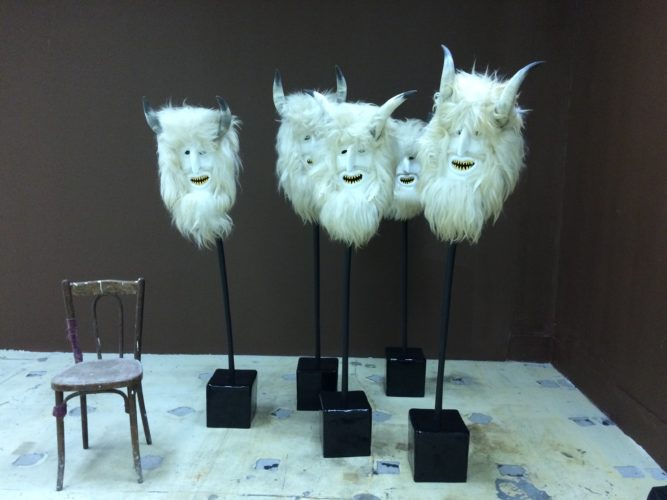
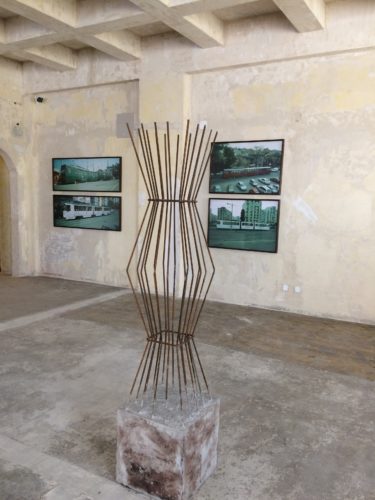
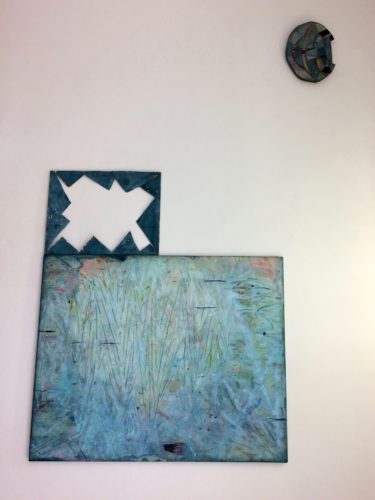
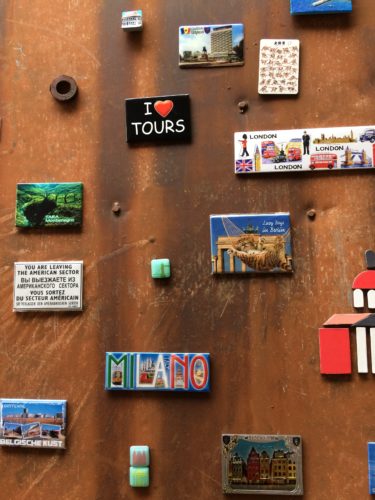
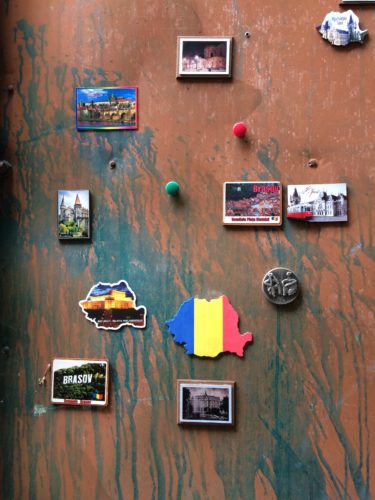
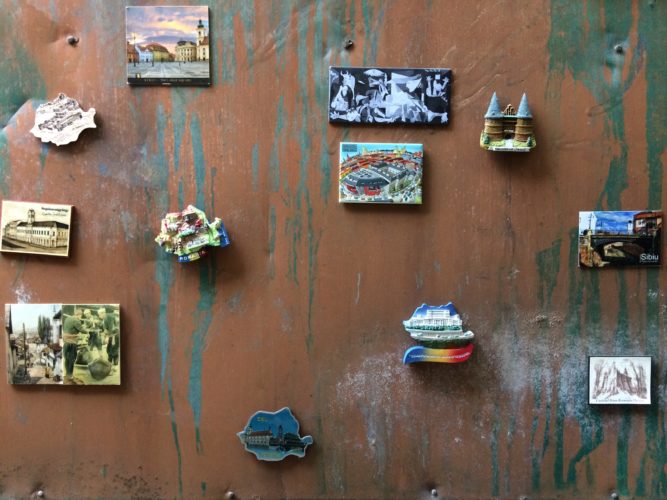
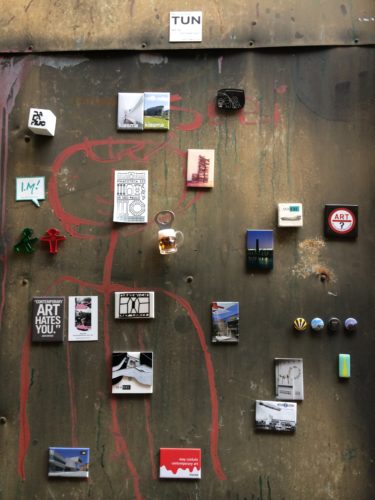
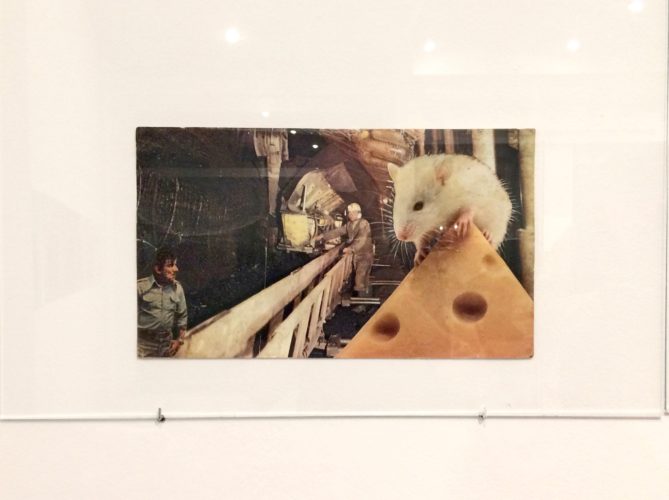
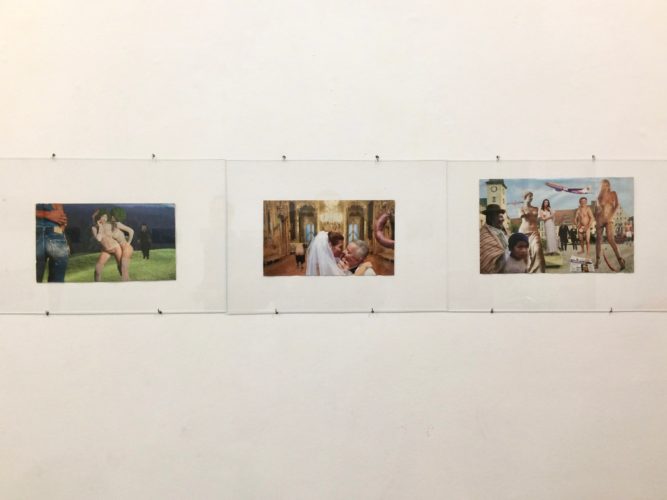
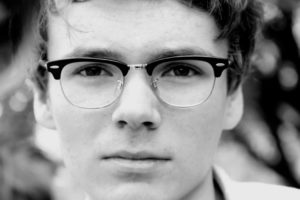
Comments are closed here.